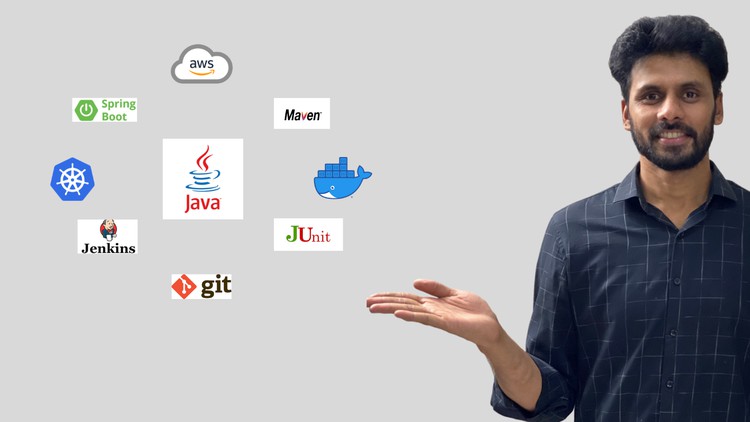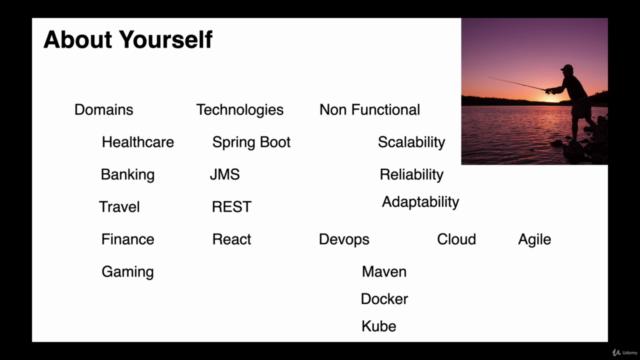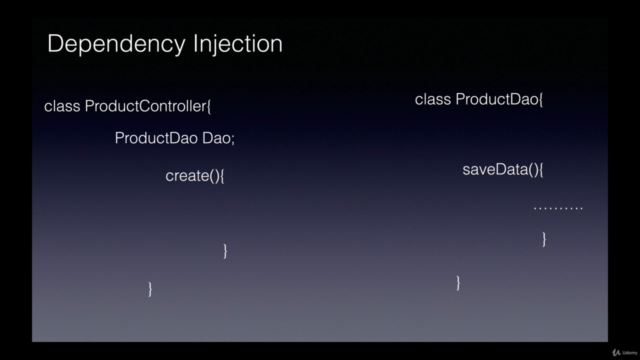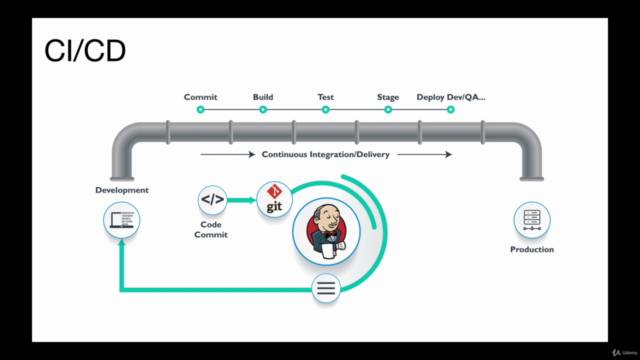Java Interview Help

Why take this course?
-
Helpful NullPointerExceptions: A
NullPointerException(NPE) is often considered harmful because it can be difficult to diagnose. However, it can be helpful when it indicates a genuine issue where an object reference is unexpectedlynull. Understanding why an NPE occurs and fixing the underlying cause rather than blindly catching and handling it is important. -
Switch Expressions: Introduced in Java 14 as an experimental feature and stabilized in Java 17, switch expressions provide a concise alternative to
if-elsechains for selecting between multiple values based on the evaluation of an expression. They are more expressive and powerful compared to traditionalswitchstatements because they can return a value directly. -
Java 15 Features: Java 15, released in September 2021, introduced features such as:
- Sealed classes and interfaces, which restrict which classes can extend or implement them.
- Text blocks, allowing for multi-line strings to be written without the need for quotes and newlines.
- Pattern matching for local-variable declarations, similar to switch expressions but for patterns other than constant values.
-
Spring Cloud: Spring Cloud provides a set of tools for developers to quickly build scalable and resilient microservices connected by APIs in Java and Kotlin applications. It simplifies the configuration of functions like service discovery, circuit breakers, intelligence routing, market-based load balancing, management, monitoring, and tracing.
-
Service Registration and Discovery: In a microservices architecture, services need to register themselves with a central directory (service registry) when they start up, and remove themselves before shutting down (service discovery). Tools like Netflix Eureka serve as a service registry and discovery server within the Spring Cloud ecosystem.
-
Client-side Load Balancing: Client-side load balancing allows individual clients to balance requests among available instances without needing a dedicated load balancer. This can be achieved using Spring Cloud's
RibbonorFeignclients, which can be configured to distribute requests across multiple registered service instances. -
API Gateway: An API Gateway acts as a single entry point for calls to different microservices, handling cross-cutting concerns such as authentication, authorization, rate limiting, and logging. Spring Cloud Gateway is a lightweight gateway built on the Spring WebFlux framework.
-
Sleuth and Zipkin: Sleuth provides a tracing implementation that instrumentates your application to annotate spans with trace context. Zipkin is a high-performance, distributed request logger inspired by Google's Dapper and Twitter's Hercules. Together, they provide the ability to track the progress of requests through a distributed system for debugging and monitoring purposes.
-
Docker: Docker containerizes applications so they can run on any Linux or Windows machine with Docker installed. It provides an isolated environment with all the necessary components (libraries, binaries, configuration files) that an application needs to execute and run as a single entity.
-
Kubernetes: Kubernetes is an open-source platform designed to automate the deployment, scaling, and operations of containerized applications. It aims to provide a highly available cluster-scale infrastructure for managing user-defined and containerized applications.
-
AWS (Amazon Web Services): AWS provides a vast array of cloud services including compute power (EC2), storage options (S3, EBS, EFS), databases (RDS, DynamoDB), and many more. It also offers management tools like CloudFormation for infrastructure automation and AWS Lambda for running serverless code without provisioning or managing servers.
-
DevOps: DevOps is a set of practices that combines software development (Dev) and IT operations (Ops) to shorten the development life cycle and provide continuous delivery with high software quality. Tools like Jenkins are used for continuous integration and continuous deployment (CI/CD).
-
Build Tools: Maven and Gradle are popular Java build tools that manage project builds, dependencies, and documentation. Maven uses a super-pom to define default scopes and versions for dependencies, which can be overridden as needed.
-
Regions, Zones, and Edge Locations: AWS data centers are distributed across regions (physical locations around the world), each of which contains multiple isolated and secure Availability Zones (AZs). Edge locations are points of presence that cache content and bring it closer to users for faster delivery.
-
Continuous Integration vs Delivery vs Deployment: Continuous integration (CI) is the process of automating the merge of code from different contributors into a single repository, often using a tool like Jenkins. Continuous delivery (CD) extends CI by ensuring that the merged code can be deployed to production. Continuous deployment is similar to CD but fully automates the deployment process once the build passes all tests.
-
Container Orchestration: Kubernetes orchestrates containers as a user-defined service, managing their lifecycle, enabling auto-scaling, and providing a platform-as-a-service (PaaS) layer above the infrastructure layer.
These are just a few highlights from the extensive topics you've covered. Each of these areas is deep with many subtopics that can be explored further.
Course Gallery




Loading charts...